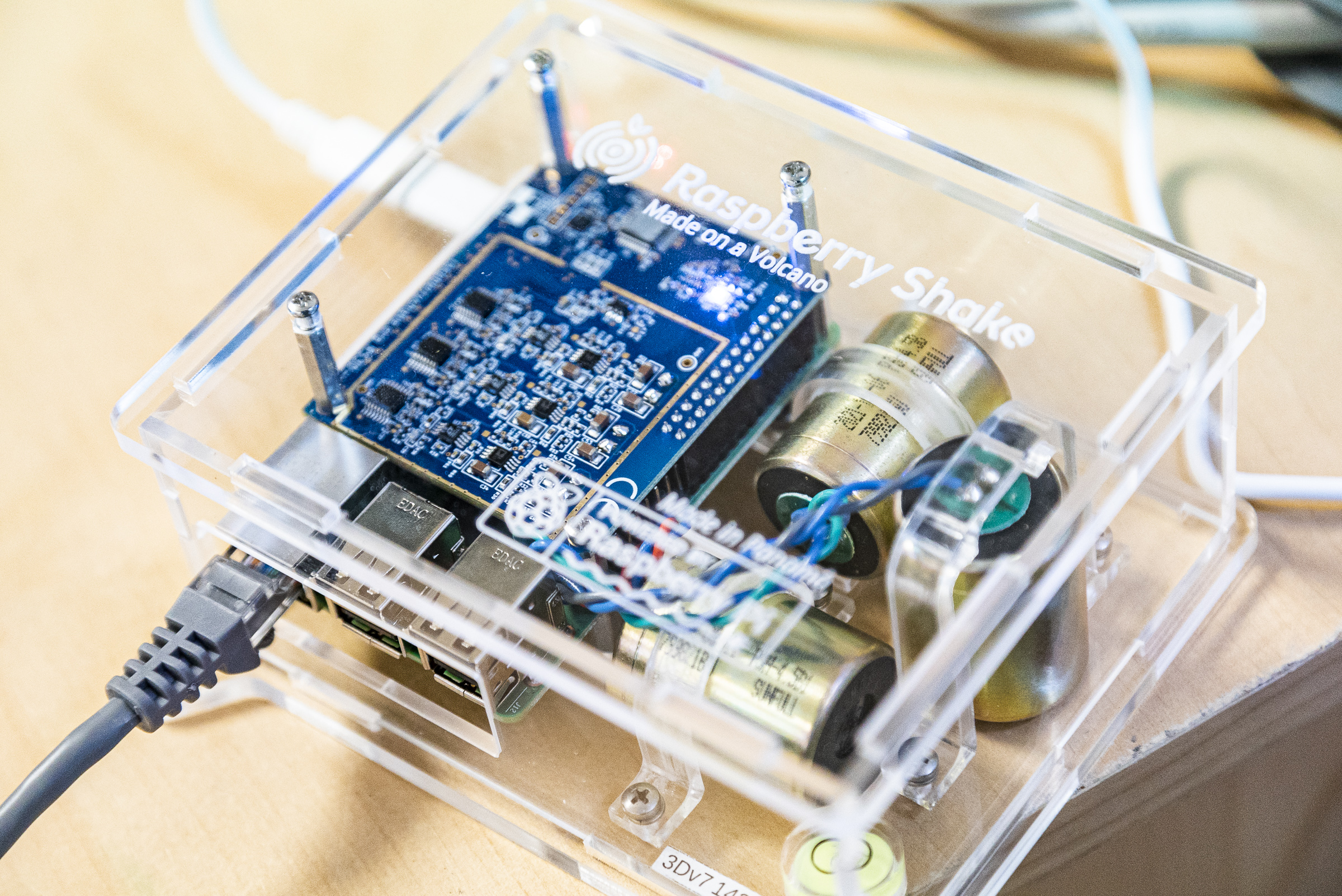The Earth Observation Club is an after-school scholastic club aimed at engaging rural Alaskan middle and high school students in geosciences and STEM (science, technology, engineering, and math). We introduce students to real-time earth observation, teaching them to track and understand their dynamic world by utilizing sensor networks and real-time remote data collection. The program offers three major components: (1) a student-maintained network of seismographs in schools; (2) an extracurricular online “Earth Observation Club”; and (3) a workforce development program leading to internship opportunities.

This extracurricular academic club, offered through a partnership with the Alaska Teaching Through Technology (T3) Alliance, provides the opportunity for interested students to develop knowledge and technical skills in geophysical sensor deployment, data collection, and interpretation, all while participating in a statewide group of engaged peers. At their schools, students meet in-person to monitor their sensors and participate in community-based projects. The larger, statewide club meets virtually once per week and stays connected continuously via the online communication platform Discord. Club members monitor and maintain their school seismographs, spread seismic literacy with their communities and peers, and engage with additional educational opportunities, such as those highlighted below.

School Spotlight: Kuinerrarmiut Elitnaurviat (Quinhagak)

If students in Mr. Dorsey's high school Geology class weren't already awake the morning of Tuesday, November 16th, 2021 they sure were after their 8:30am "STOMPQUAKE" activity. Quinhagak is a small (~700 population), majority Yup'ik community situated on the lower Kuskokwim Bay in southwestern Alaska. After school, students crowded into Mr. Dorsey's classroom to assist with the permanent installation of their new RS4D seismograph.
Quinhagak has an active Earth Observation Club and its sensor network includes a weather station, air-quality sensor, and soil-temperature monitoring systems. An EarthObs student joined the Alaska Earthquake Center in summer 2024 as a student intern working with the field team.
In the News
Alaskan students monitor earthquake activity with new devices - Alaska's News Source
UAF student gets K-12 classrooms jumping with seismology project - UAF Geophysical Institute News
Students Share their Earthquake Research at UAF - Fairbanks News Miner
Students from Across Alaska Work Together to Address problems in their Communities - Fairbanks News Miner
Earthquake Center Web Stories
Seismology in Schools Program gets Students Shaking in Rural Alaska
Shake Challenge Symposium 2023 Engaging Rural Alaska's Future STEM Innovators
Alaska and Puerto Rico High School Students Connect Through Seismology
Earth Observation Club Students Visit the Nation's Capital
Program Partners
The Earth Observation Club was started by the Alaska Earthquake Center in collaboration with the Alaska T3 Alliance program. The Alaska T3 Alliance program is an organization that provides community-focused STEM education tools and training to educators around Alaska and has existing partnerships with schools and communities that already have experience with the Raspberry Pi technology and T3 Alliance teaching model.
Technology: The Raspberry Shake Seismometer

As its name suggests, the Raspberry Shake seismometer is no regular earthquake sensor. Based upon the widely-used single-board Raspberry Pi computer, Raspberry Shake seismographs, or "shakes" as they often referred to, are low-cost, hobbyist-grade, plug-and-play seismometers that have become popular with seismology hobbyists and citizen scientists as an accessible, easy solution for monitoring ground motion and detecting earthquakes in their homes, offices, or, increasingly, classrooms. Raspberry Shakes were chosen for the Alaska Seismology in Schools program in particular because of the publicly available browser-based visualization software which allows for easy access to real-time data streams.
If you have a Raspberry Shake and are looking for resources on how to install / use it in your school, there are several great resources we recommend: The Raspberry Shake manual and educator's guide are great places to start for guidance on getting a device set up. For lesson plans, classroom guides, slideshows, and more, our Alaska Seismology in Schools Education Resources portal has excellent resources for teachers.
If you are interested in partnering to help support the Earth Observation Club, we would love to hear from you! Please reach out to Elisabeth Nadin at enadin@alaska.edu.
This project is a collaboration between the Alaska Earthquake Center and the Alaska T3 Alliance Program. It is supported in part by the UAF Geophysical Detection of Nuclear Proliferation University Affiliated Research Center (GDNP UARC).






